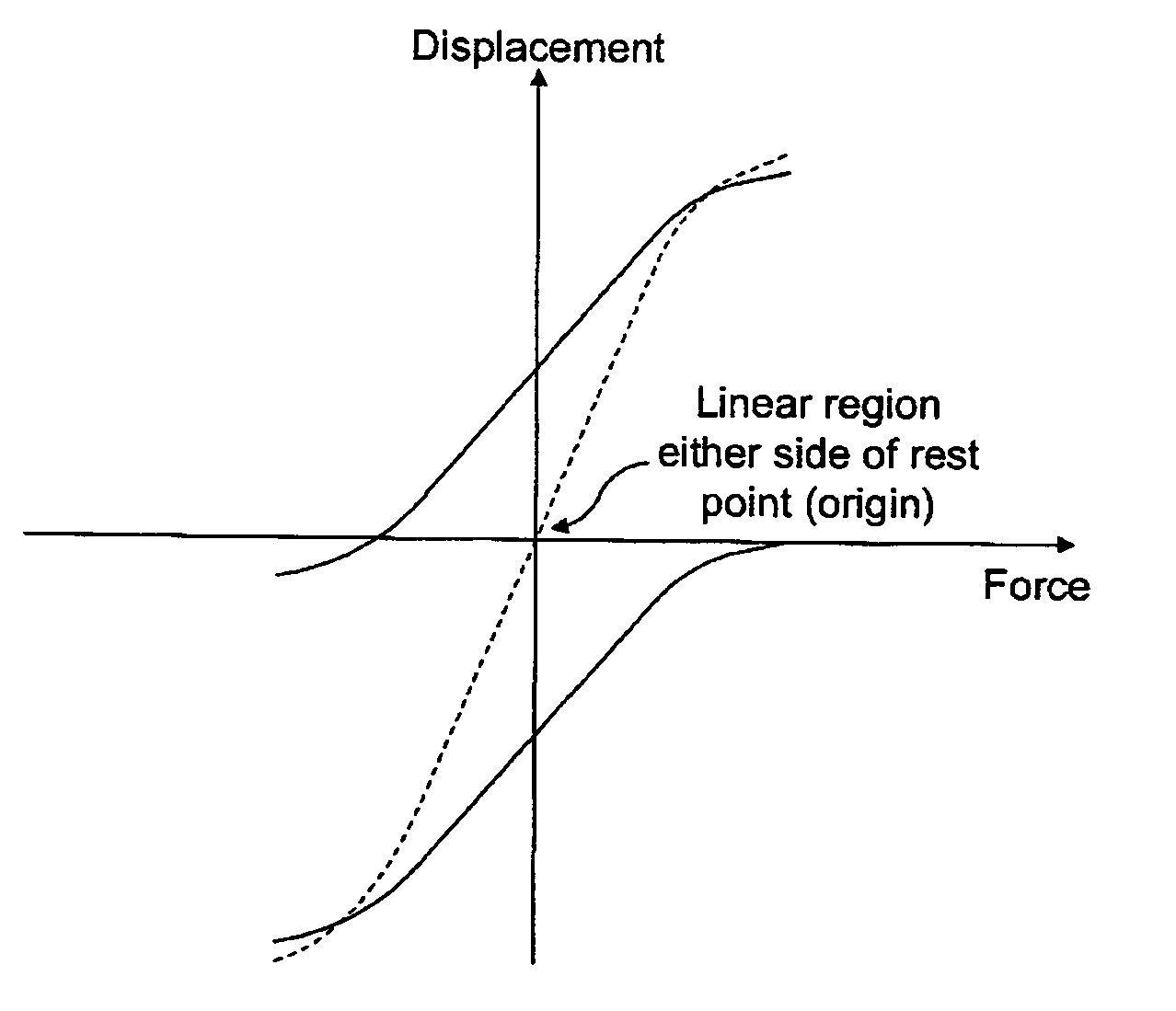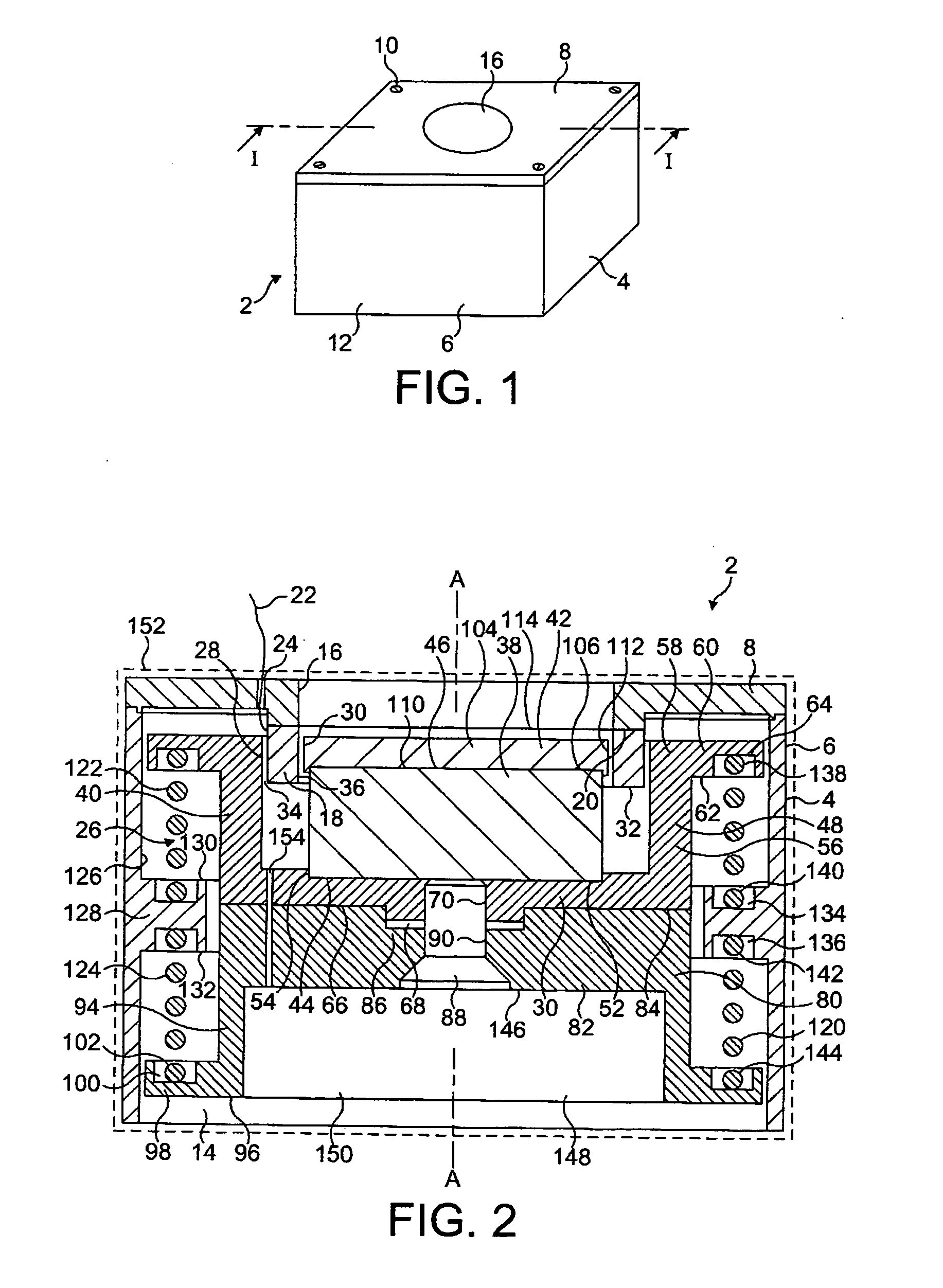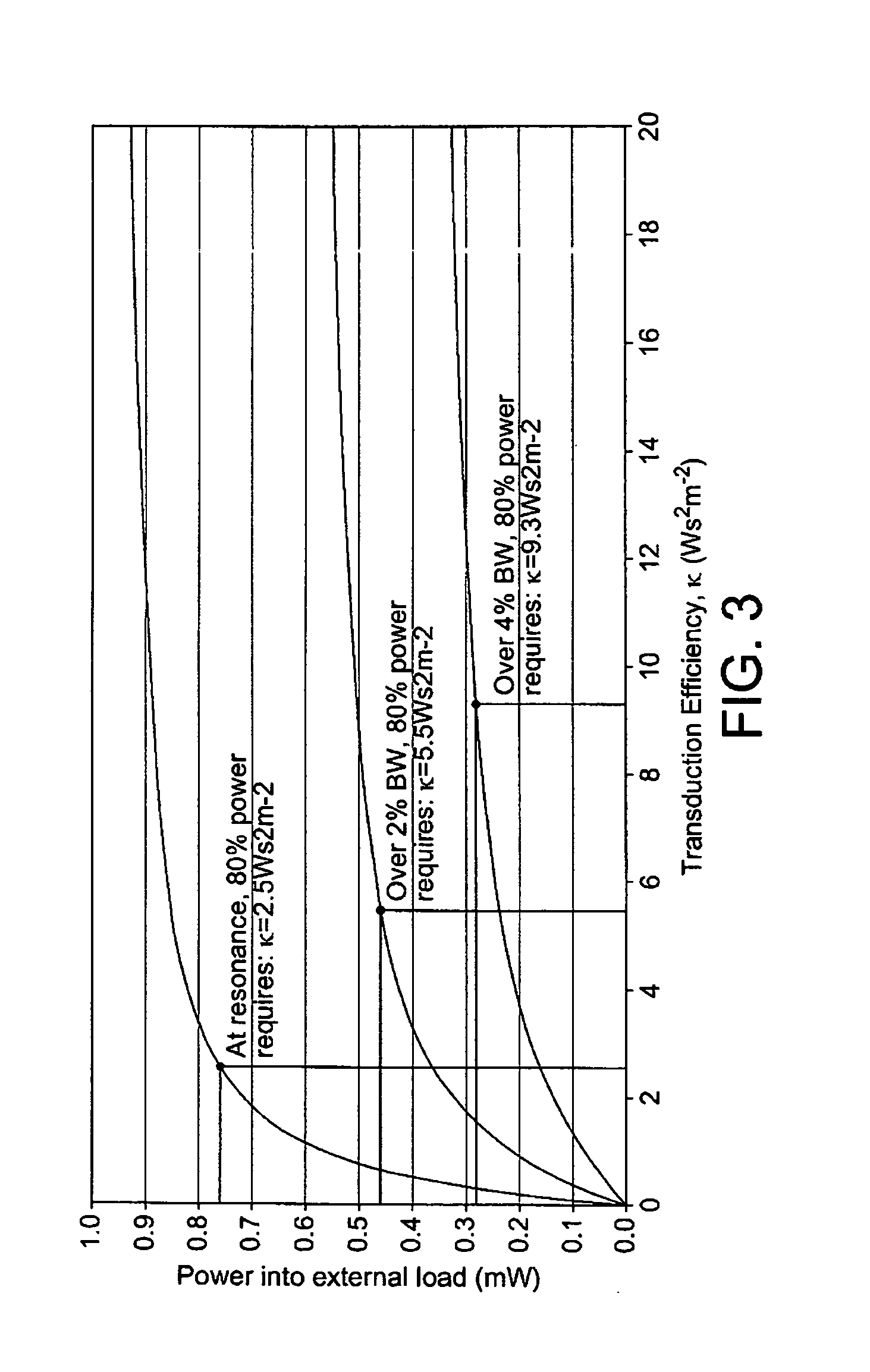Electromechanical generator for converting mechanical vibrational energy into electrical energy
a technology of electrical energy and mechanical vibration, which is applied in the direction of dynamo-electric machines, dynamo-electric components, supports/encloses/casings, etc., can solve the problems of increased manufacturing costs, increased manufacturing costs, and difficulty in loading excess mass onto cantilever beams, so as to increase the operating band width of the device, increase the electrical output, and increase the effect of magnetic coupling
- Summary
- Abstract
- Description
- Claims
- Application Information
AI Technical Summary
Benefits of technology
Problems solved by technology
Method used
Image
Examples
Embodiment Construction
[0069] The electromechanical generator of the present invention is a resonant generator known in the art as “velocity-damped” where all of the work done by the movement of the inertial mass relative to the housing is proportional to the instantaneous velocity of that movement. Inevitably, a portion of that work is absorbed overcoming unwanted mechanical or electrical losses, but the remainder of the work may be used to generate an electrical current via a suitable transduction mechanism, such as the electrical coil / magnetic assembly described below.
[0070]FIGS. 1 and 2 show an electromechanical generator 2 for converting mechanical vibrational energy into electrical energy in accordance with an embodiment of the present invention. 1. The electromechanical generator 2 comprises a housing 4. The housing 4 comprises an outer peripheral wall 6 and a lid 8 which is securely fitted, at corners of the lid 8, to the outer peripheral wall 6 by means of threaded bolts 10. The lid 8 is square ...
PUM
 Login to View More
Login to View More Abstract
Description
Claims
Application Information
 Login to View More
Login to View More - R&D
- Intellectual Property
- Life Sciences
- Materials
- Tech Scout
- Unparalleled Data Quality
- Higher Quality Content
- 60% Fewer Hallucinations
Browse by: Latest US Patents, China's latest patents, Technical Efficacy Thesaurus, Application Domain, Technology Topic, Popular Technical Reports.
© 2025 PatSnap. All rights reserved.Legal|Privacy policy|Modern Slavery Act Transparency Statement|Sitemap|About US| Contact US: help@patsnap.com



